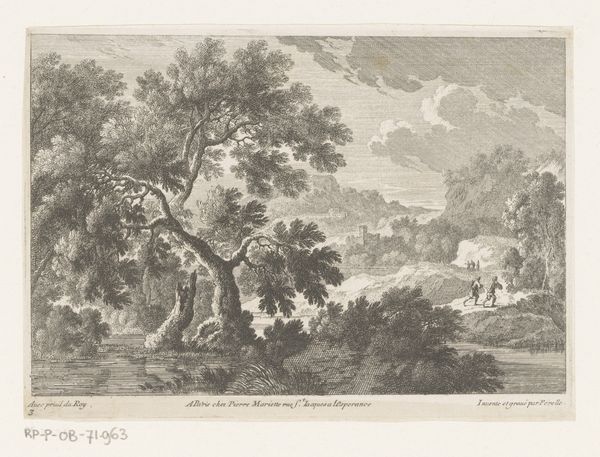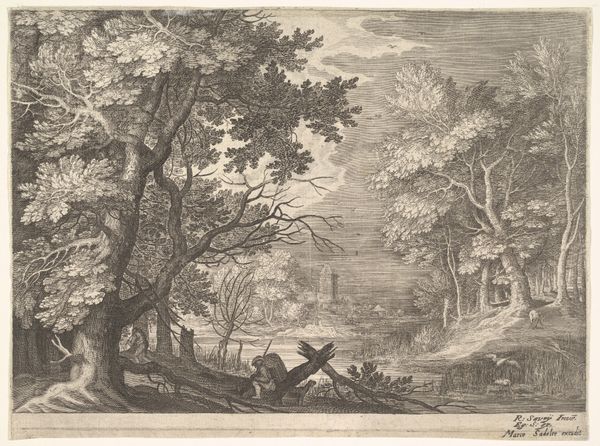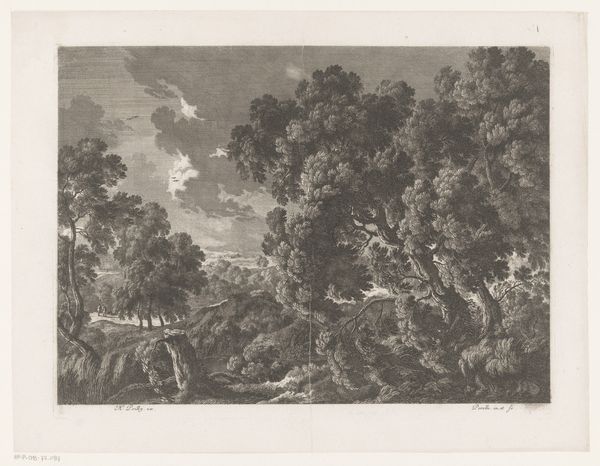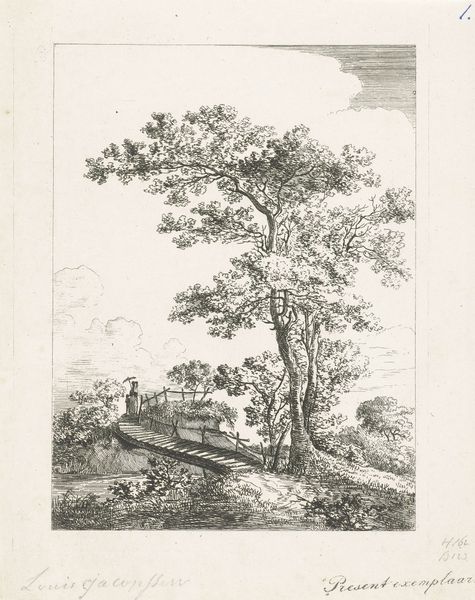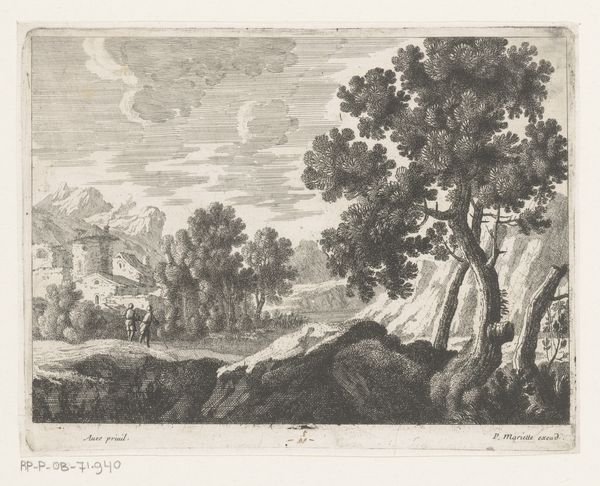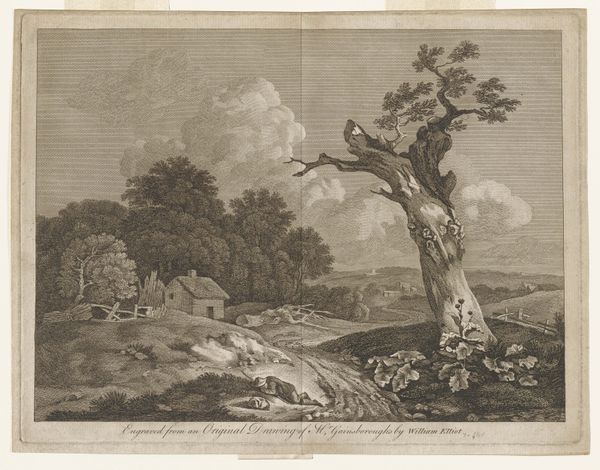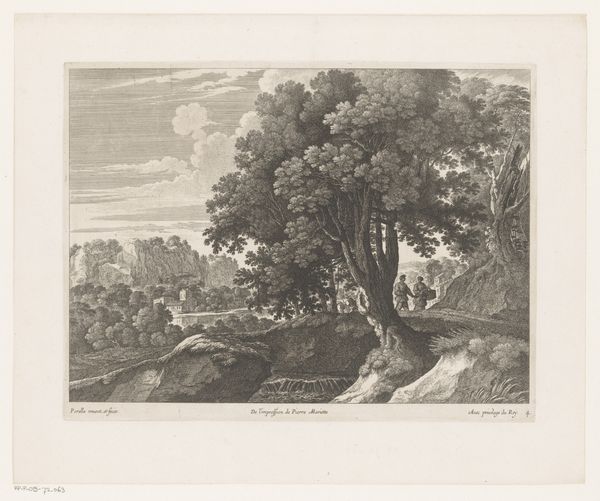
print, engraving
#
baroque
# print
#
landscape
#
genre-painting
#
engraving
Dimensions: height 132 mm, width 165 mm
Copyright: Rijks Museum: Open Domain
Editor: Here we have Matthäus Merian's "Konijnenjacht bij Bazel", created around 1625. It's a wonderfully detailed engraving. The eye is immediately drawn to this enormous, overshadowing tree in the foreground and the leisure scene beneath it. How does a piece like this resonate in its time, or even now? Curator: Considering the socio-political landscape of the early 17th century, this engraving offers a glimpse into the privileges afforded to certain classes. Hunting, as depicted here, wasn't just a sport; it was a marker of social standing. These scenes were carefully curated, reinforcing a narrative of power and leisure. Do you notice how the figures are placed within this vast landscape? Editor: I see how the tree seems to be framing them, almost legitimizing their position, or suggesting harmony. Curator: Precisely. The image operates as a social commentary, reflecting and perhaps even reinforcing the status quo. Landscape, genre painting – they’re intertwined here to project a certain ideal. The printmaking process itself, allowing for wider distribution, played a key role in disseminating these ideas. What audience do you think Merian was targeting? Editor: Presumably other privileged individuals who would have understood and perhaps even participated in similar activities? Curator: Exactly. And beyond that, consider how images like these shaped perceptions, created aspirations. It’s not simply about documenting reality, but about constructing it. A potent function of art and visual culture that extends even into our contemporary moment. Editor: It’s interesting to consider the way these historical genre scenes informed cultural values. Thank you! Curator: Indeed. It's a reminder that art doesn't exist in a vacuum. Looking at these through social history, we start questioning not only what we see, but why.
Comments
No comments
Be the first to comment and join the conversation on the ultimate creative platform.
